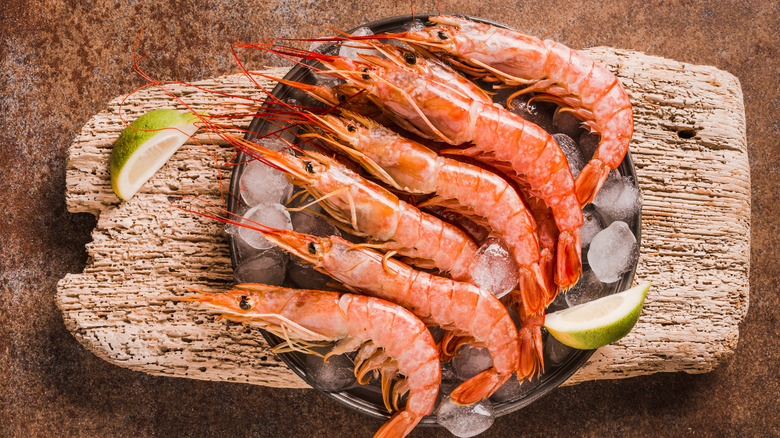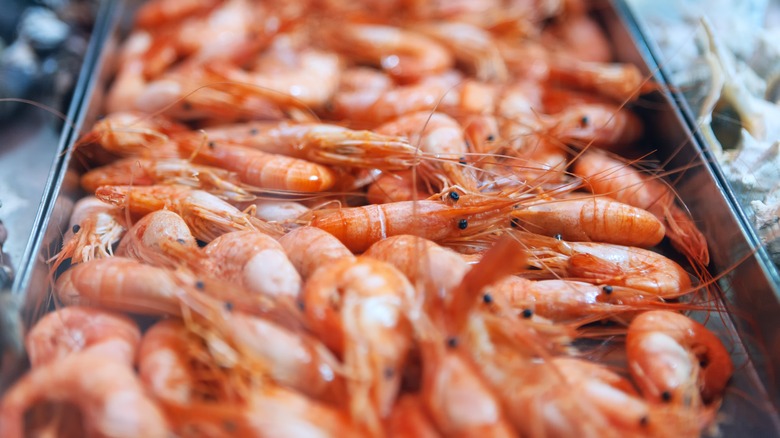The Reason Shrimp Can Be So Expensive
Whether it's served chilled with a side of cocktail sauce or added to a hearty gumbo, shrimp is a seafood superstar. With a sweet, buttery flavor that's similar to crawfish, many consider the crustacean to be undeniably delicious. Plus, they boast nutritional benefits like antioxidants, omega-3 fatty acids, and iodine, which are all important for brain health (via Healthline). The only thing that might stop you from enjoying shrimp on a regular basis is its hefty price tag. So what's the real reason why shrimp can be so expensive?
Discussions on the sustainability of the fishing industry, and concerns about overfishing, have resulted in seafood consumption becoming not only an ethical issue but also a financial one. While fish traditionally has been considered costly, seafood prices have skyrocketed in recent years. According to Seafood Source, shrimp prices inflated by 14% between 2019 and 2021, and consumer demand for larger varieties of shrimp has increased.
Shrimping is laborious business
Like most goods and services, there are certain costs built into the price of shrimp, regardless of whether the shrimp is farmed or wild. Expenses like equipment (trawlers, traps, fuel, ice, feed, etc.), inspection fees, and labor costs can cause crustacean prices to skyrocket.
According to The Cold Wire, shrimping can be difficult, as fishermen must find viable locations to catch the crustaceans, which can change depending on the season, weather, and ocean currents. And because shrimp spoils quickly, the fishermen have to work fast in order to process and deliver their catch to distributors and vendors.
Moreover, low yields can also impact prices. The Institute for Environmental Studies explains that shrimp have naturally high mortality rates, making it increasingly difficult for shrimpers to meet quotas. In comparison, disease can also affect mortality rates for farmed shrimp, which can also result in lower yields that are also smaller in size — this is why colossal prawns can be pricier.
While coastal areas are more likely to see lower prices, that doesn't mean shrimp isn't accessible farther inland. To avoid sticker shock, The Spruce Eats recommends buying in bulk, opting for frozen varieties, and using shrimp as an ingredient, rather than as the centerpiece of a dish.

